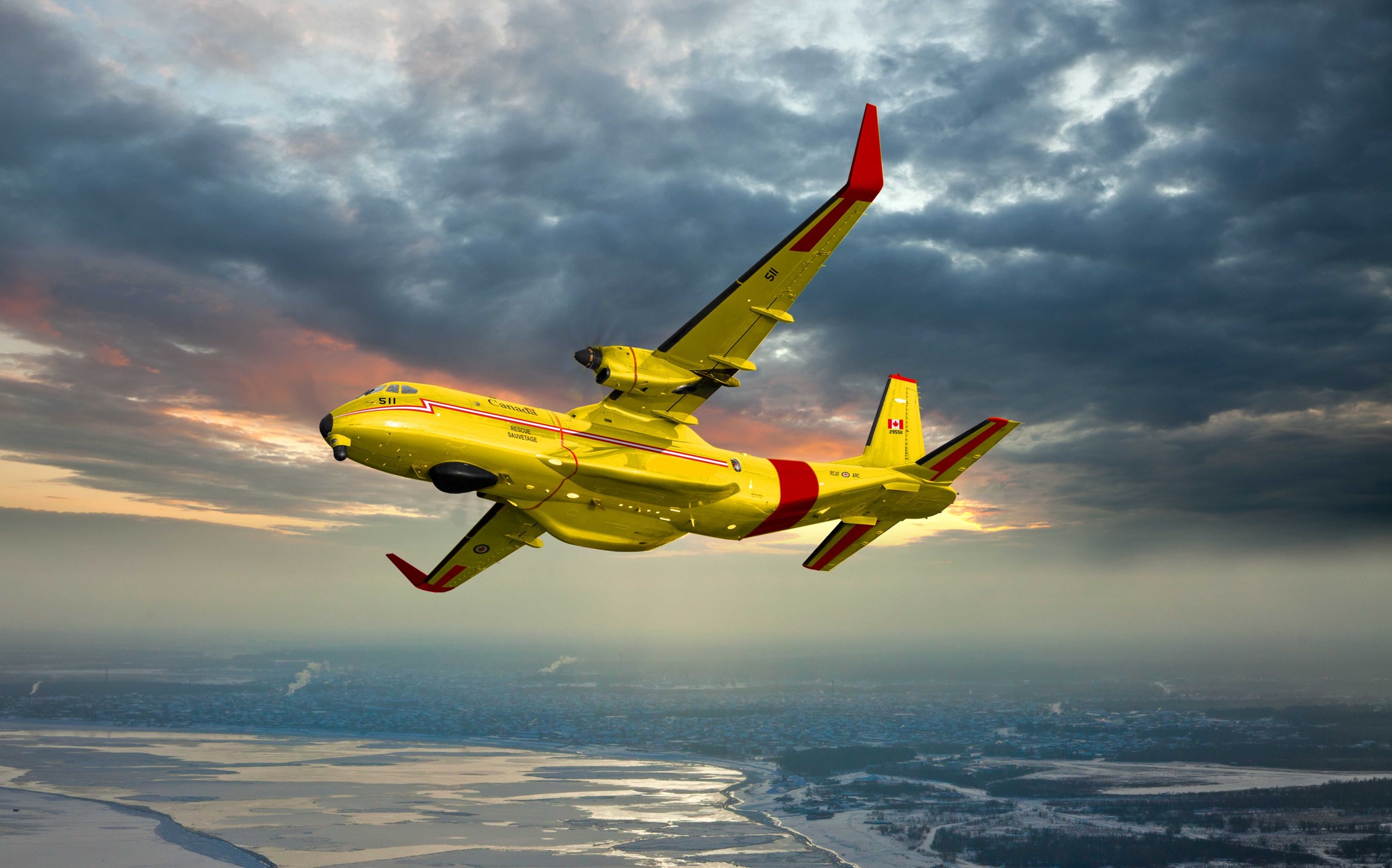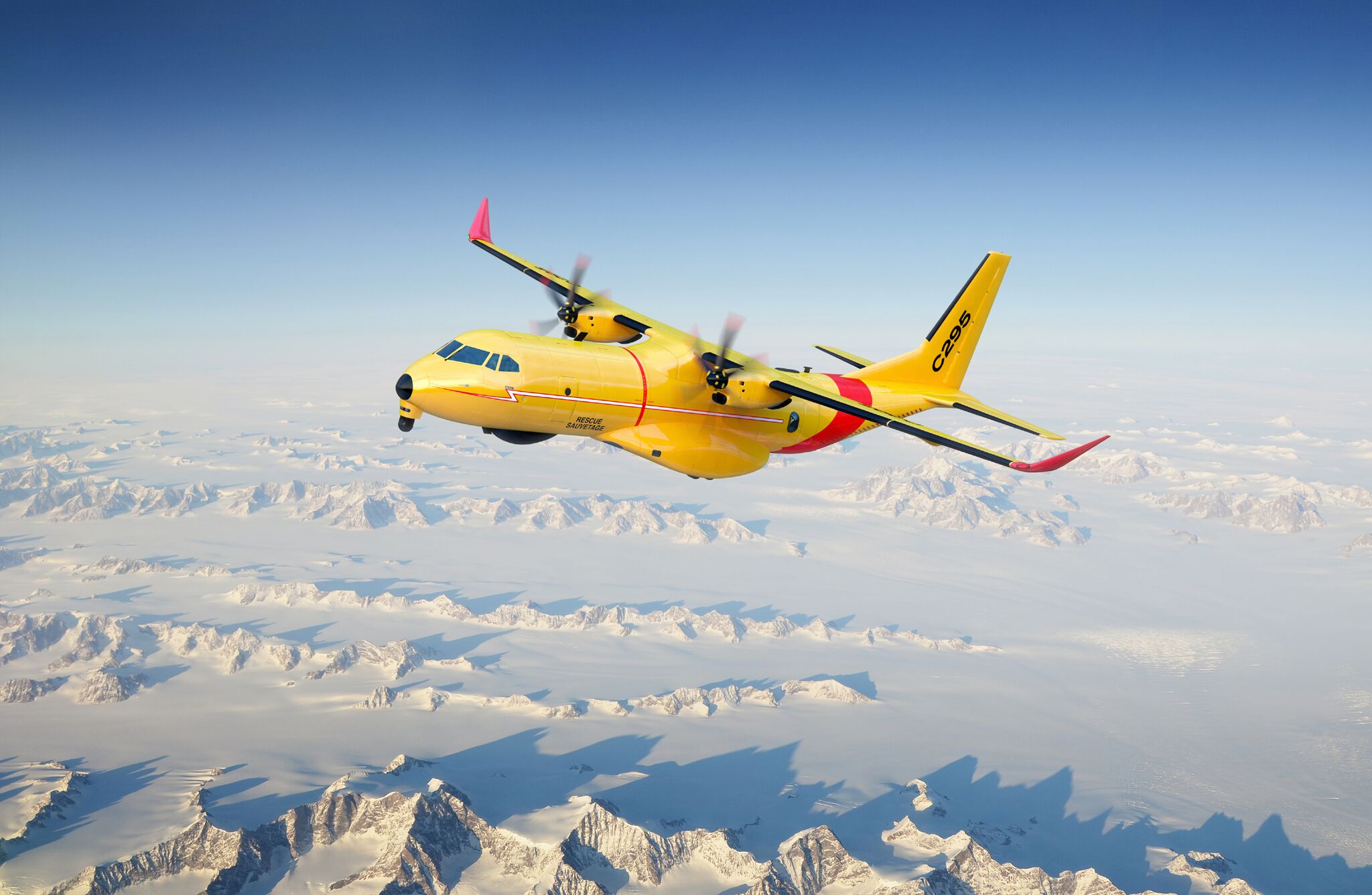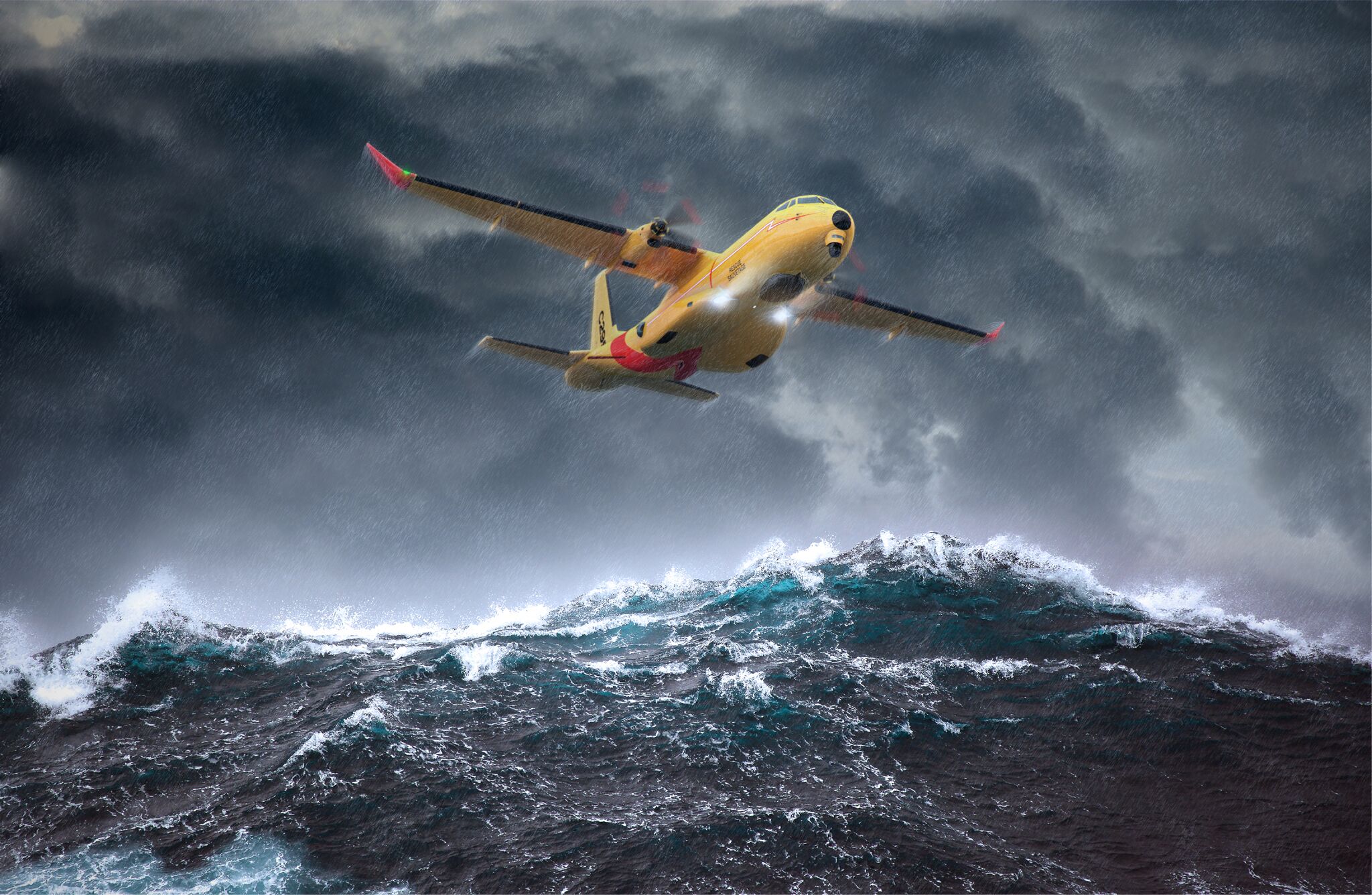Fixed-wing search and rescue procurement project
Project Summary
The Government of Canada is acquiring 16 CC-295 Kingfisher aircraft to take over the search and rescue duties undertaken by legacy fleets, CC-115 Buffalo aircraft and CC-130H Hercules aircraft.
Airbus Defence and Space is providing a search and rescue solution including a modern and technologically advanced aircraft along with maintenance and support services at four RCAF Wings across Canada until potentially 2042. The solution includes a newly constructed simulator-equipped training centre in Comox, British Columbia.
The new CC-295 Kingfisher will carry out critical, life-saving search and rescue missions across Canada’s vast and challenging territory, including the Arctic.
Using integrated sensors, such as the MX-15 Electro-Optical and Infrared Camera, crews will be able to locate persons or objects—such as downed aircraft—from more than 40 kilometres away, even in low-light conditions. This will contribute to improving the overall effectiveness of searches. It is anticipated that the on-scene search time will be reduced with the use of these enhanced sensor capabilities, and the aircraft will be more reliable and available more often than current fleets.
The aircraft will also use state-of-the-art communications systems that will allow search and rescue personnel to share real-time information with partners on the ground.
Throughout the transition to the CC-295, aircraft from existing fleets will be operated to maintain search and rescue capabilities.
Project phases

FWSAR project is in Phase 4 – Implementation
1. Identification
1. Identification
- November 2002
2. Options analysis
2. Options analysis
- 2004
3. Definition
3. Definition
- Expenditure Authority definition: March 29, 2012
- Project Approval and Amended Expenditure Authority definition: March 26, 2015
- Request for proposals (RFP) posted: March 31, 2015
- RFP closed: January 11, 2016
- Bid evaluation: January to June 2016
- Bid evaluation complete: June 1, 2016
- Aircraft trials: March 2016
4. Implementation
4. Implementation
- Project approval implementation: December 1, 2016
- Contract award: December 1, 2016
- First delivery in Spain: December 18, 2019
- Released to Service: March 14, 2025
- Aircraft enters operational service: May 1, 2025
- Initial operational capability: 2025-2026
- Full operational capability: 2029-2030
5. Close-out
5. Close-out
- 2030-2031
Learn more about the Defence procurement process.
Additional Information
Project Updates
Project Updates
May 1, 2025
Aircraft entered operational service at 19 Wing Comox, B.C.
March 14, 2025
Commander of the Royal Canadian Air Force approved the CC-295 to be released to service.
January 13, 2025
Aircrew Conversion Training began at 19 Wing Comox, B.C.
September 9, 2024
CC-295 limited participation in the National Search and Rescue Exercise (SAREX) 2024.
January 15, 2024
Maintenance Conversion Training began at 19 Wing Comox, B.C.
January 8, 2024
Aircrew Initial Cadre Training started in Comox, B.C.
May 11, 2023
Initial aircrew and maintenance training completed in Comox, B.C.
May 5, 2023
442 Squadron was granted maintenance accreditation for the CC-295 Kingfisher in Comox, B.C
March 25, 2023
Fifth aircraft arrived in Comox, B.C.
December 23, 2022
A fifteenth aircraft was accepted in Spain.
November 21, 2022
Aircrew interim training started in Comox, B.C.
November 8, 2022
A fourteenth aircraft was accepted in Spain.
July 6, 2022
A thirteenth aircraft was accepted in Spain.
June 3, 2022
A twelfth aircraft was accepted in Spain.
May 27, 2022
An eleventh aircraft was accepted in Spain.
November 7, 2021
A fourth aircraft arrived in Comox, British Columbia.
October 29, 2020
Aircrew interim training started in Comox, B.C.
October 26, 2020
Maintainer initial cadre training started in Comox, B.C.
September 17, 2020
First CC-295 aircraft arrived to its home base in Comox, B.C.
July 31, 2020
Second and third aircraft were accepted by Canada in Spain.
February 4, 2020
Aircraft Maintenance Trainer arrived at 19 Wing Comox, B.C.
December 18, 2019
The first aircraft was accepted by Canada in Spain.
July 4, 2019
The first aircraft made its first flight in Spain, followed by start of flight testing in mid-July.
March 8, 2019
The first aircraft rolled off the production line and began contractor ground testing in Spain.
October 31, 2018
The in-service support critical design review was closed.
September 19, 2018
Final assembly of the first FWSAR aircraft began.
July 23, 2018
The aircraft critical design review was closed.
January 25, 2018
The Comox training center ground breaking ceremony was conducted.
December 4, 2017
Construction began on the training facility in 19 Wing Comox, B.C.
June 2017
Steel cutting was started on Canada’s Fixed-Wing Search and Rescue aircraft.
December 1, 2016
The contract was awarded to Airbus Defence and Space. One contract was awarded for the acquisition and the in-service support.
June 2016
The bid evaluation that followed the closure of the Request for Proposal (RFP) was completed.
March 2016
Bid evaluation was underway. Two qualified bidders remain. Aircraft testing took place at bidders' facilities.
January 11, 2016
The RFP was closed with three bidders submitting six proposals. Bid evaluation began.
March 31, 2015
The Request for Proposal was posted on buyandsell.gc.ca.
March 2012
Expenditure Authority was approved for the Fixed-Wing Search and Rescue Replacement project allowing the development of the RFP.
December 2011
The Fixed-Wing Search and Rescue Replacement Project Management Office was re-established to acquire a new fleet of fixed-wing search and rescue aircraft.
Industry
Benefiting Canadian Industry
To reduce risks to both the Government of Canada and to bidders, the following industry engagement activities occurred between December 2011 and March 2015:
- before the release of the final Request for Proposal, two industry days took place with over 200 participants each, seven multi-day one-on-one meetings with each industry team, and eight telephone/video conferences;
- all RFP documents were released to industry for review and comment via 30 Letters of Interest and 176 formal responses were received;
- site visits were conducted to the four existing Main Operating Bases and a tour of a Joint Rescue Coordination Centre took place;
- a video showing a day in the life of a search and rescue technician to ensure industry fully understood requirements was produced and released.
The Industrial and Technological Benefits (ITB) policy was applied to the acquisition and in-service support contracts.
The total ITB obligation for the FWSAR acquisition is $1.9 billion. As of August 2020, $1.64B in progress, and $284.7M completed. Total ITB obligation for FWSAR in-service support is $578M, $443M in progress, and $135.6M completed.
Our Commitment to Canadian Industry apply to:
- Acquisition
- Maintenance
The contract for the training facility in Comox, British Columbia was awarded to the Canadian company CAE via the prime contractor Airbus Defence and Space.
Technical Information
Technical Information
The CC-295 is a twin-engine, medium-range, multi-purpose transport aircraft manufactured by Airbus Defence and Space.
- Length: 24.45 metres / 80 feet, 3 inches
- Height: 8.60 metres / 28 feet, 3 inches
- Wing Span: 26.70 metres / 90 feet, 7 inches
- Wing Area: 60 square metres / 646 square feet
- Power Plant: 2 Pratt & Whitney Canada PW 127G turboprop engines
- Engine Power (each): 1972 kW / 2645 shp
- Maximum Takeoff Weight: 23,200 kilograms / 51,147 pounds
- Cruise Speed: 452 kilometres per hour / 244 knots / 281 miles per hour
- Service Ceiling: 7,620 metres / 25,000 feet
- Range: 4,500 kilometres / 2,430 nautical miles / 2,796 miles
- Crew Complement: 6
- Passengers: 36 (troop transport configuration)
- Quantity: 16
- Location: Scheduled for:
- 19 Wing Comox, British Columbia
- 17 Wing Winnipeg, Manitoba
- 8 Wing Trenton, Ontario
- 14 Wing Greenwood, Nova Scotia
- Manufacturer: Airbus Defence and Space
- Estimated life expectancy: 30 years
Note: These numbers may be subject to modification based on aircraft configuration.
Project Costs
Project Costs
Initial Contract
The initial contract was for $2.4 billion* and covered 11 years (to 2027). These costs included:
- First six years of acquisition, transition and set-up
- Following five years of in-service support
Extended in-service support
Following the first 11 years, the department has an option to extend in-service support for up to 15 years (to 2042). The government may exercise these options in increments of one to three years based on contract performance.
In October 2020 through a contract amendment, Canada exercised the first option year of in-service support, leaving 14 years remaining.
In total, the initial contract and the extended in-service support contract could total $4.7 billion*.
* These amounts do not include taxes.
Issues/Risks
Issues/Risks
Given the volume and complexity of the development work remaining and the global COVID-19 pandemic situation, a re-baselining of the key milestones became necessary in February 2022. Notwithstanding the re-baseline, significant schedule risk remains.


